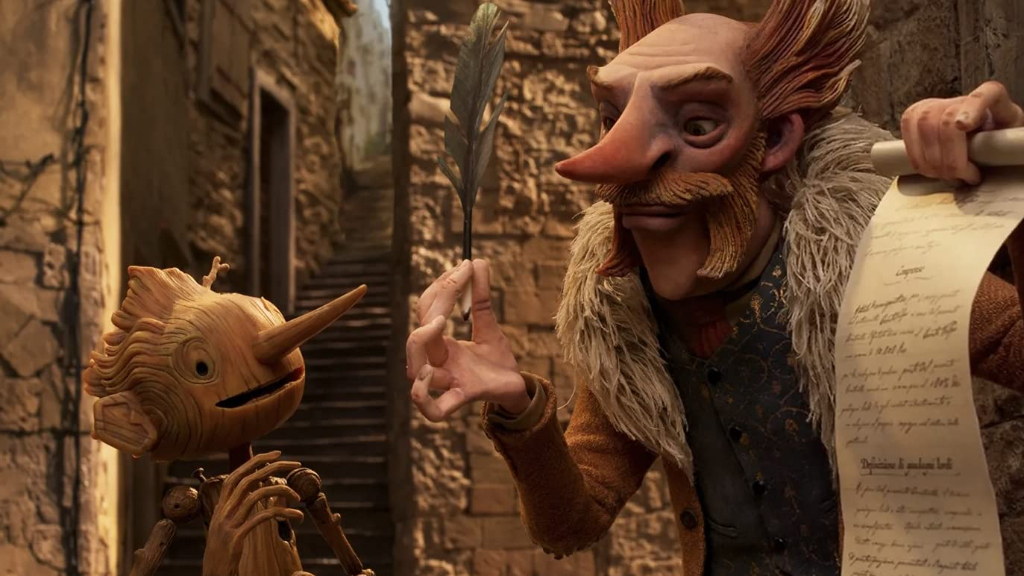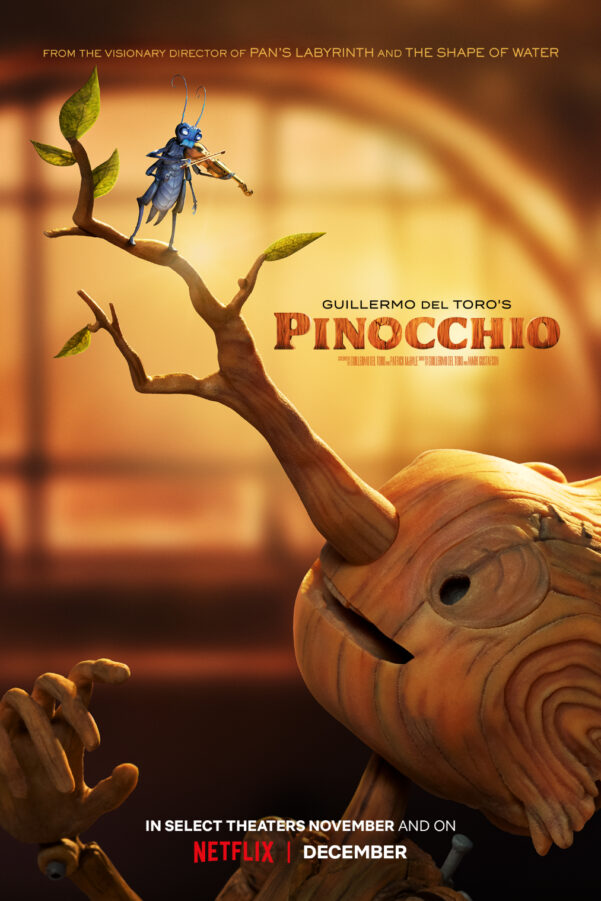Guillermo del Toro’s Pinocchio

A retelling of the classic Cardo Collodi story, Guillermo del Toro’s Pinocchio places the familiar fairytale in 1930s Fascist Italy, where grieving father Geppetto (David Bradley) builds a wooden puppet after his son is killed in a bombing. The puppet is given life – and the name “Pinocchio” – by the mysterious Wood Sprite (Tilda Swinton), but the curious and excitable Pinocchio proves to be something of a troublemaker, even with the guidance of aspiring novelist Sebastian J Cricket (Ewan McGregor).
The first thing that stands out about Pinocchio is the art style, using stop-motion animation combined with a distinctive stylisation that’s dripping with del Toro charm. This aesthetic imbues the piece with a profound sense of tactile intimacy, bringing out subtle emotions in its characters and immersing the audience into its gorgeously-rendered world in a way that perfectly evokes the essence of a fairytale. The animation is fluid and full of personality, with even the slight visual jank inherent to the medium working well to give the film an underlying sense of uncanniness that accentuates Pinocchio’s darker and more unsettling parts without losing any of the sincerity.
Pinocchio’s writing takes the original fairytale in a decidedly darker direction, using its source material as a springboard to explore heavy concepts such as grief and mortality, as well as diving into socio-political commentary on topics such as fascism, the cruelty of war and the ways that people are exploited by capitalist systems. There are a lot of subplots and themes that go on at once in Pinocchio, and they sometimes come together a little gracelessly, but the picture manages to make that part of its allure, feeding into its awkward, roughly-hewn protagonist’s character arc surprisingly well.
While the narrative primarily focuses on the titular puppet’s journey, the writing ensures that every character gets some interesting development, with several compelling arcs taking place over the course of the film. These character interactions all feed directly into the universal themes of love and loss at the movie’s core, and all manage to connect without overcrowding the narrative thanks to the piece’s careful and considered pacing.
Guillermo del Toro’s Pinocchio is a masterwork, combining complex and engaging visuals with an intelligent and gripping story that balances the disturbing and the heart-warming effortlessly. Ambitious, charming and filled to the brim with passion and sincerity, Pinocchio makes for a wonderful cinematic experience with no strings attached.
Umar Ali
Guillermo del Toro’s Pinocchio is released in cinemas on 25th November and available on Netflix on 9th December 2022.
Watch the trailer for Guillermo del Toro’s Pinocchio here:


























Facebook
Twitter
Instagram
YouTube
RSS